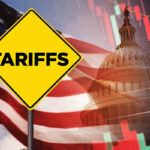1. The Tariff Fallout: Which Industries & Routes Are Most Affected?
The Trump administration’s new tariffs (up to 100% on EVs, 50% on solar cells, 25% on steel/aluminum) target sectors where China dominates global supply chains. Key impacts:
-
Automotive: Chinese EV exports to the U.S. plummeted 99% YTD (South China Morning Post), forcing brands like BYD to focus on Europe/Southeast Asia.
-
Electronics: Tariffs on semiconductors and batteries disrupt tech supply chains—Apple and Tesla now face higher costs for Chinese-made components.
-
Transpacific Shipping: China-U.S. West Coast container volumes dropped 12% in Q2 2024 (Port of L.A. data), though some demand shifted to East Coast ports to avoid labor disputes.
2. How Companies Are Evading Tariffs: The “Transshipment Game”
To bypass tariffs, exporters use loopholes like:
-
“Minor Processing” in Third Countries: Chinese steel is shipped to Mexico for minimal finishing, then labeled “Made in Mexico” to enter the U.S. tariff-free.
-
Vietnam & Malaysia: Solar panel exporters route cells through these nations for final assembly, though the U.S. now scrutinizes certificates of origin.
-
E-Commerce Tricks: Temu/Shein exploit the $800 de minimis rule by splitting shipments into small parcels—a tactic under Congressional scrutiny.
Case Study: Mexico’s Boom as a China Proxy
-
Mexico surpassed China as the top U.S. trade partner in 2023, with nearshoring accelerating.
-
Risks: Over 40% of Mexico’s exports to the U.S. contain Chinese inputs (IMF data), raising concerns about tariff enforcement.
3. Shipping Lines’ Survival Strategies: Capacity Cuts & New Routes
Despite lower China-U.S. demand, carriers avoid a rate collapse by:
-
Blank Sailings: Maersk and MSC canceled 15% of Transpacific sailings in June 2024 to balance supply/demand.
-
Pivoting to Profitable Lanes: CMA CGM added India-U.S. East Coast services, while COSCO boosted Southeast Asia-Europe capacity.
-
Red Sea Effect: Longer voyages around Africa (adding 2-3 weeks transit time) absorb 6-9% of global container capacity, propping up rates.
4. Long-Term Risks for Global Logistics
-
Cost Inflation: Tariffs + shipping delays could add 5-10% to consumer prices for electronics, per S&P Global.
-
Supply Chain Fragmentation: Companies adopt “China+1” sourcing, but infrastructure gaps in India/Vietnam create bottlenecks.
-
Political Wildcards: A Trump election win may bring even higher tariffs (e.g., 60% on all Chinese goods), triggering further trade chaos.
Key Takeaways for Businesses
-
Diversify Now: Importers should audit suppliers in tariff-resilient regions (e.g., Thailand for electronics, Turkey for textiles).
-
Lock in Contracts: Ocean freight rates may spike in Q3 ahead of peak season—negotiate long-term agreements with carriers.
-
Watch for Crackdowns: U.S. Customs is increasing de minimis inspections and origin fraud investigations.
Bottom Line: Tariffs are accelerating a broader decoupling of U.S.-China trade, but the transition won’t be smooth. Agility—and alternative routes—will define winners in this new era.





